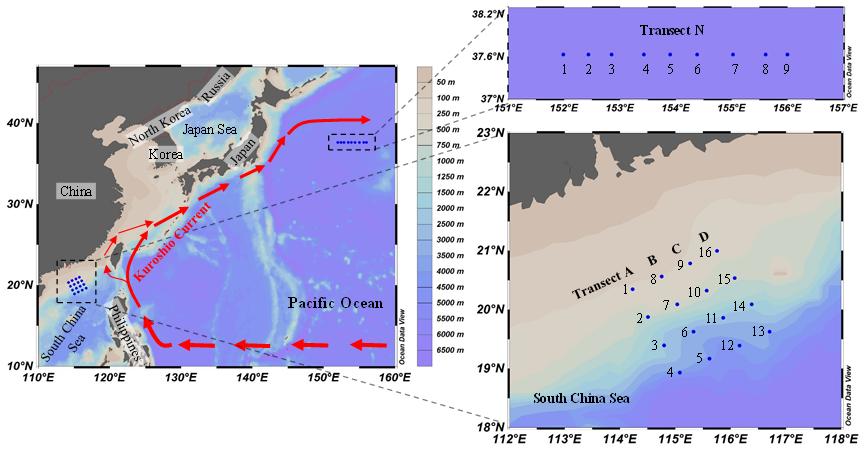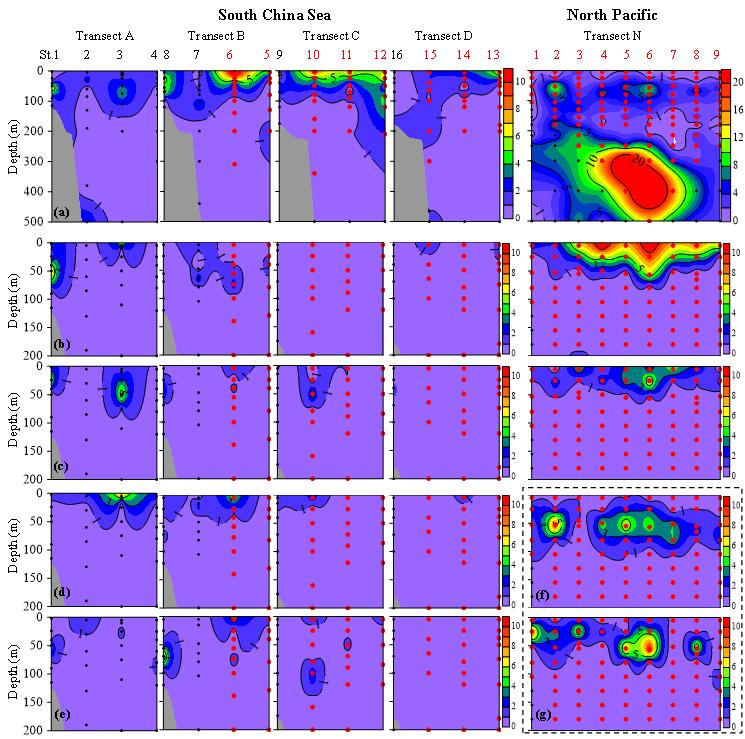Planktonic ciliates consist of tintinnid and aloricate ciliates, which taxonomically belong to Oligotrichia and Choreotrichia (phylum Ciliophora, class Spirotrichea). Ciliates, especially tintinnids, grow rapidly, are sensitive to environmental changes, and are considered effective bioindicators in different seas.
Mesoscale eddies are an important physical feature in oceans. An eddy retains the physical, chemical, and biological properties of its original water mass and is typically well-differentiated from its surrounding environment.
Mesoscale warm eddies are common in the South China Sea and western North Pacific, where they create a variety of physic-chemical environments and host diverse phytoplankton and mesozooplankton. However, the influence of warm eddies on microzooplankton (e.g., planktonic ciliates) has rarely been studied.
Dr. WANG Chaofeng of the research team led by Prof. ZHANG Wuchang at Institute of Oceanology, Chinese Academy of Sciences (IOCAS), investigated the impact of the warm eddy on planktonic ciliate in the South China Sea and the western North Pacific.
The study was published in Ecological Indicators.
Researchers found a similar hydrological environment with the isotherm and isohaline concaved characteristic in both the South China Sea and western North Pacific. All sampling depths were divided into warm eddy and reference areas, and more tintinnid species were found in warm eddies than in reference areas.
In addition, abundant tintinnids were divided into subsurface-peak and surface-peak groups. The temperature-salinity-plankton diagrams revealed that subsurface-peak group had obvious higher abundance in warm eddies than in reference areas, and thus they can act as warm eddy bioindicator species.
Another important finding of this study is that ciliates had obvious high abundance in warm eddy subsurface layers in both the South China Sea and the western North Pacific. As for vertical distribution patterns, a "bimodal-peak" (high ciliate abundance in surface and 80 m layers) pattern appeared in warm eddy-influenced areas of both the South China Sea and western North Pacific, which differed from reference areas (surface-peak pattern, high ciliate abundance in surface layers).
The study was supported by the funding from the China Postdoctoral Science Foundation, the National Basic Research Program of China, the Applied Research Program of postdoctoral researchers in Qingdao, and the Creative Team Project of the Laboratory for Marine Ecology and Environmental Science, Qingdao National Laboratory for Marine Science and Technology.

Fig. 1 Survey stations in the northern South China Sea (SCS) and western Northern Pacific (NP)

Fig. 2 Vertical distribution of temperature (T, °C) and salinity (S) and Chlorophyll a concentration (Chl a, μg L-1) from surface to 500 m (or bottom with depth < 500 m). Black dots are sampling points. Stations in red mean influenced by warm eddy.

Fig. 3 Vertical distribution of surface-peak abundant species (ind. L-1) in the SCS and NP. Black and red dots are sampling points. Red dots mean warm eddy-influenced sampling points. a, Dadayiella ganymedes; b, Ascampbelliella armilla; c, Steenstrupiella steenstrupii; d, S. gracilis; e, Amphorides amphora; f, Eutintinnus lusus-undae; g, Protorhabdonella curta.

Fig. 4 Temperature-salinity-plankton diagrams for subsurface-peak and surface-peak groups in the SCS and NP. Dots (including black, red and blue) are sampling points.
Wang, C.F., et al. Impact of the warm eddy on planktonic ciliate, with an emphasis on tintinnids as bioindicator species. Ecological Indicators, 2021, 133, 108441.
WANG Chaofeng
Institute of Oceanology
E-mail: wangchaofeng@qdio.ac.cn
(Editor: ZHANG Yiyi)
|
|

Address: 7 Nanhai Road, Qingdao, Shandong 266071, China
Tel: 86-532-82898902 Fax: 86-532-82898612 E-mail: iocas@qdio.ac.cn


